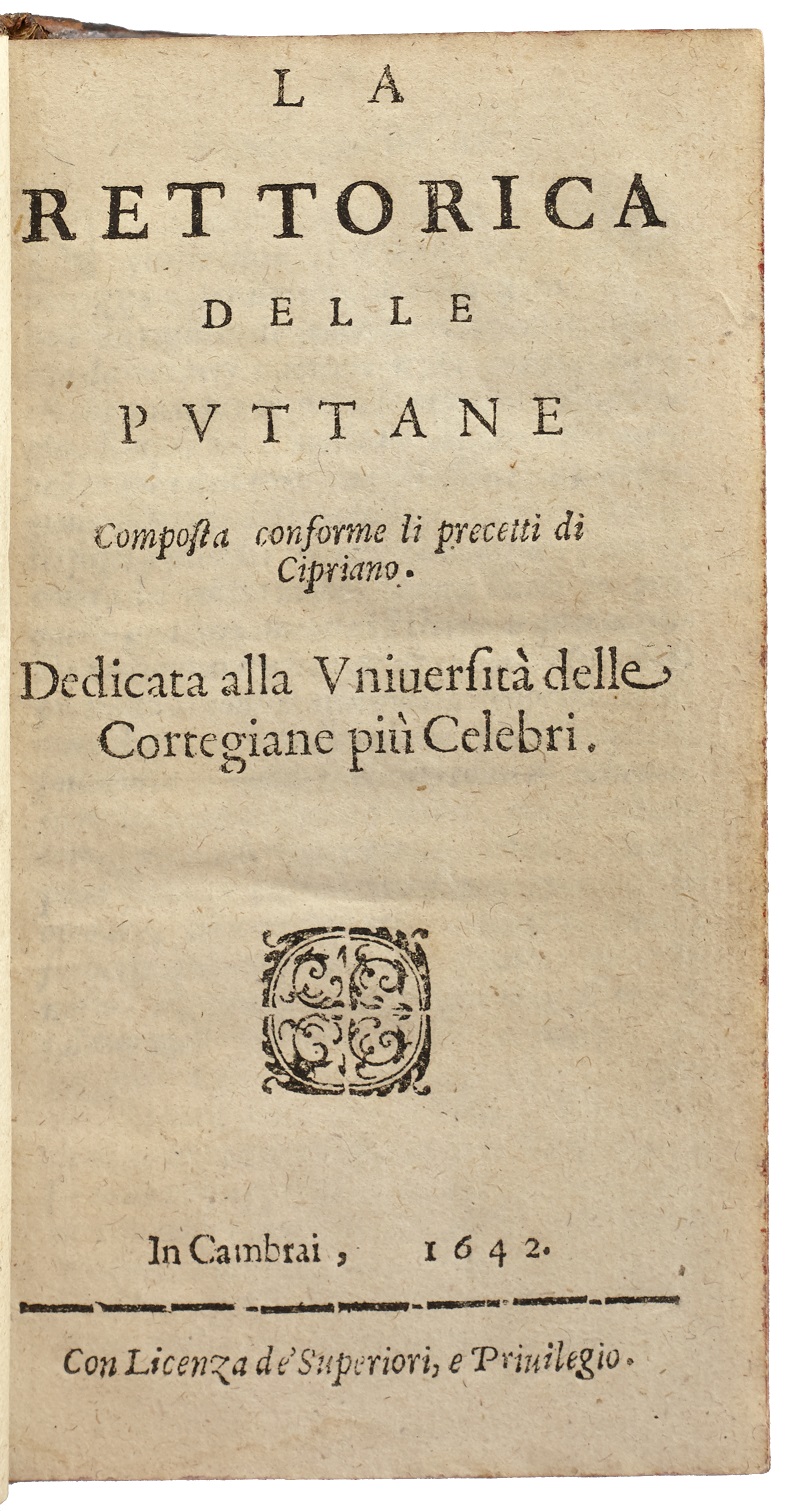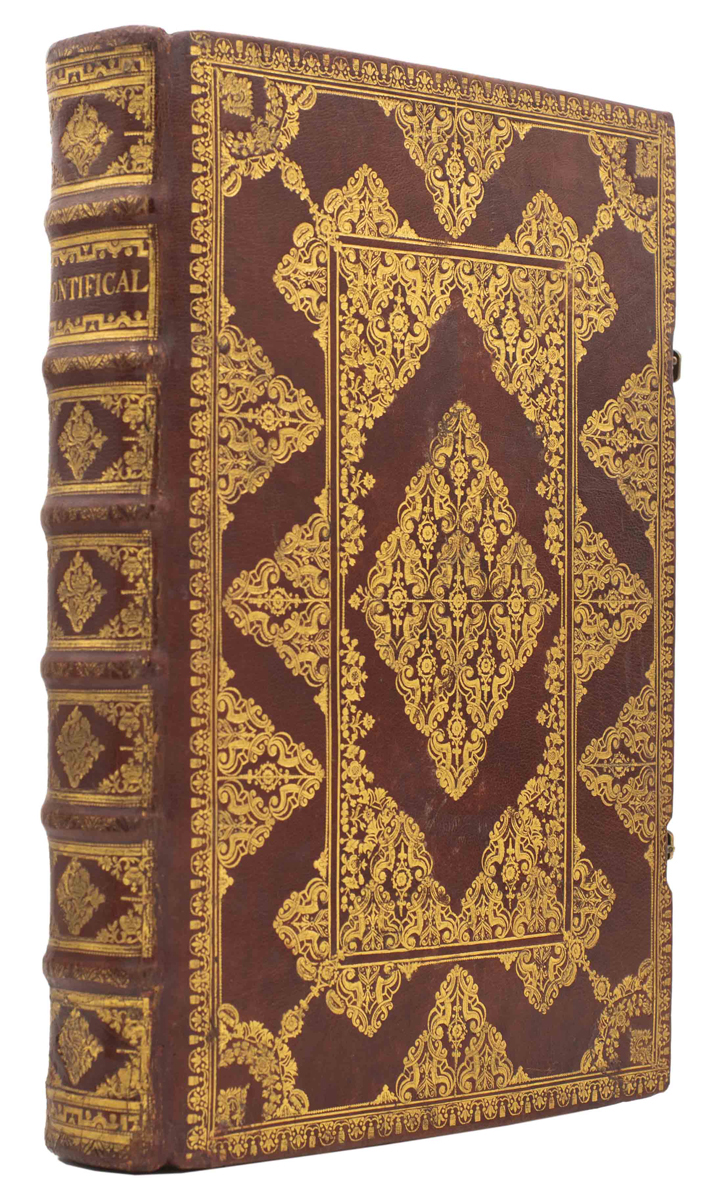
THE RHETORIC OF WHORES
[PALLAVICINO, Ferrante.]
La rettorica delle puttane. Composta conforme li precetti di Cipriano. Dedicata alla università delle cortegiane più celebri.
‘Cambrai’ (but Venice), [no printer], 1642.
12mo (136 x 72 mm), pp. [ii], 138, [4, blank]; faint dampstain in foot of last few leaves, upper margins occasionally trimmed a little close, a few light stains, but a good, crisp copy in eighteenth-century Italian mottled sheep, spine gilt; slightly rubbed, joints cracked but holding, some minor restoration.

Added to your basket:
La rettorica delle puttane. Composta conforme li precetti di Cipriano. Dedicata alla università delle cortegiane più celebri.
Extremely rare first edition, fourth variant (variant ‘V’), of a classic of seventeenth-century erotic literature, the masterpiece of the celebrated satirist Ferrante Pallavicino (1615–1644). Published anonymously in Venice with a fictitious Cambrai imprint, The rhetoric of whores is a ferocious anti-Jesuit work in which the 15 lessons of the standard Jesuit rhetoric textbook, Cipriano Suarez’s De arte rhetorica, are turned into lessons given by an experienced old prostitute to her young disciple.
‘More than any of his other books, The rhetoric of whores demonstrates why Pallavicino was the only Italian author of his epoch capable of a coherent vision that integrated satire, scepticism, and naturalistic morality . . . . Although Pallavicino claims in his introduction to be writing a morality tale about the false lures of commercial sex, he fooled no one, least of all the Inquisitiors of the Holy Office. It is obvious that the “artificial lies”, “deceptions” (inganni), and “wickednesses” (ribalderie) of the courtesan were also the principal ingredients in a Jesuit education . . . . By systematically pursuing the parallels between rhetorical persuasion and erotic seduction, Pallavicino demonstrates how the high art of rhetoric has the same instrumental character as the lowly deceptions of the prostitute’ (Edward Muir, The culture wars of the late Renaissance: skeptics, libertines and opera, 2007, pp. 90–94).
Following several scurrilous, and often obscene, satirical attacks on the Roman Curia and Pope Urban VIII, Pallavicino had been arrested in Venice in 1641 but managed to be released from prison after only six months thanks to the help of powerful friends. After the publication of La rettorica delle puttane in 1642, Pallavicino was forced to flee Venice and seek refuge in Bergamo; in 1644 he was lured to France by the prospect of becoming Richelieu’s historian but, arriving in Avignon, he was betrayed by one of his companions, arrested by the Vatican authorities and subsequently beheaded.
Immediately banned after its publication and the majority of copies suppressed, today the work is extremely rare. In her bibliography of Pallavicino, Laura Coci lists four different variants of the first edition (called, in order, ‘L’, ‘B’, ‘P’ and ‘V’), with a total of only eight copies recorded. Examples of variant ‘V’ can be found at the Vatican Library and the Bibliothèque nationale (for a complete census, see Laura Coci, ‘Bibliografia di F. Pallavicino’, in Studi seicenteschi, vol. XXIV, 1983, pp. 221–306, at pp. 250–251, and F. Pallavicino, La retorica delle puttane, ed. L. Coci, Parma, 1992, pp. 133–135).
Gay III 1012.

